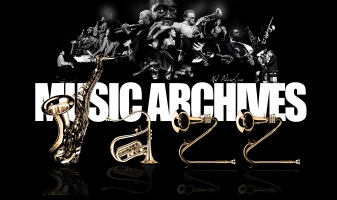
 |
New Book Illuminates Playboy’s Impact on Jazz |
Post Reply 
|
| Author | |
snobb 
Forum Admin Group 

Site Admin Joined: 22 Dec 2010 Location: Vilnius Status: Offline Points: 28461 |
 Post Options Post Options
 Thanks(0) Thanks(0)
 Quote Quote  Reply Reply
 Topic: New Book Illuminates Playboy’s Impact on Jazz Topic: New Book Illuminates Playboy’s Impact on JazzPosted: 13 Dec 2015 at 7:02am |
|
New Book Illuminates Playboy’s Impact on Jazz History Known by many for its pictorals—and respected by some for its historically significant interviews—Playboy played a significant role in the development of jazz during the latter half of the 20th century. In the new book Playboy Swings, author Patty Farmer examines how the magazine and its namesake clubs and jazz festival promoted musicians. She makes a convincing case for the company’s artistic contributions and offers numerous interesting anecdotes. And despite an audacious subtitle (“How Hugh Hefner and Playboy Changed the Face of Music”), Farmer usually avoids hyperbole, but leaves a few crucial questions unanswered. As Newport Jazz Festival founder George Wein writes in his introduction to the book, Playboy’s founder, Hugh Hefner, has always been a jazz fan. When he started the magazine in Chicago during the early 1950s, coverage of the music was a major part of his mission. The debut issue, which arrived on newsstands in December 1953, included an article on Tommy and Jimmy Dorsey. Even if more people remember, say, the likes of Marilyn Monroe on the cover, Farmer reaffirms that Playboy published numerous significant, sometimes controversial, jazz features and criticism in its early years. These important pieces include Bob Perlongo’s “West Coast Jazz Is Nowhere” from 1955, which featured rare quotes from saxophonist Wardell Gray. In 1962 Alex Haley conducted a provocative interview with Miles Davis shortly before the author’s own famous collaboration with Malcolm X. Still, Farmer sometimes wildly overstates her case, such as when she writes that Playboy’s latter-’50s jazz poll “would become more influential than those of either Metronome or DownBeat.” Playboy would go on to present jazz in different media, including a couple short-lived, yet influential, TV programs and its festival, which continues to this day at California’s Hollywood Bowl. Farmer’s liveliest chapters describe the rise of the Playboy Clubs, and an array of old-school musicians and comedians revel in their memories of the glamorous rooms. Playboy Swings also tells how Hefner remained insistent on combating segregation while opening clubs that carried his magazine’s name. These battles became especially fierce when the brand expanded into Southern cities, including New Orleans. While Farmer charts Playboy’s progressive strides toward racial integration and equality, she still passes along stereotypes regarding gender and the jazz audience. She writes that in the 1950s, “Something about tenor saxophonists with beards and berets spinning endless variations on a few chord changes appealed less to women than men.” How Farmer comes to this conclusion is not stated, although this distorted generality seems to have persisted over the decades. And many female jazz fans—from back then to today—would have a response that should be heard. Several women who worked as waitresses (aka “Bunnies”) in the clubs do get the chance to tell their stories, but they don’t discuss the music played within the venues. Much of their conversations are about the night-to-night work in the clubs and how the organization treated them with more kindness than some of the celebrity guests. With no counterarguments about the company’s benevolence, the reader is left taking them all at their word. Strangely, the book does not mention the former Bunny who would go on to have the most musically successful post-Playboy career out of all of them: Debbie Harry. But Farmer does go into detail about the interesting singer/actress Lainie Kazan, who showed enough strength within the organization to create Lainie’s Room, her own venue within the Los Angeles Playboy Club during the 1970s. Kazan’s musical taste matched her self-confidence: She booked the likes of Sarah Vaughan and BIll Evans, and her own story reflects her discernment and assurance. (Note: To read a DownBeat review of the 2015 Playboy Jazz Festival, click here.) —Aaron Cohen from www.downbeat.com |
|
 |
|
Post Reply 
|
|
|
Tweet
|
| Forum Jump | Forum Permissions  You cannot post new topics in this forum You cannot reply to topics in this forum You cannot delete your posts in this forum You cannot edit your posts in this forum You cannot create polls in this forum You cannot vote in polls in this forum |